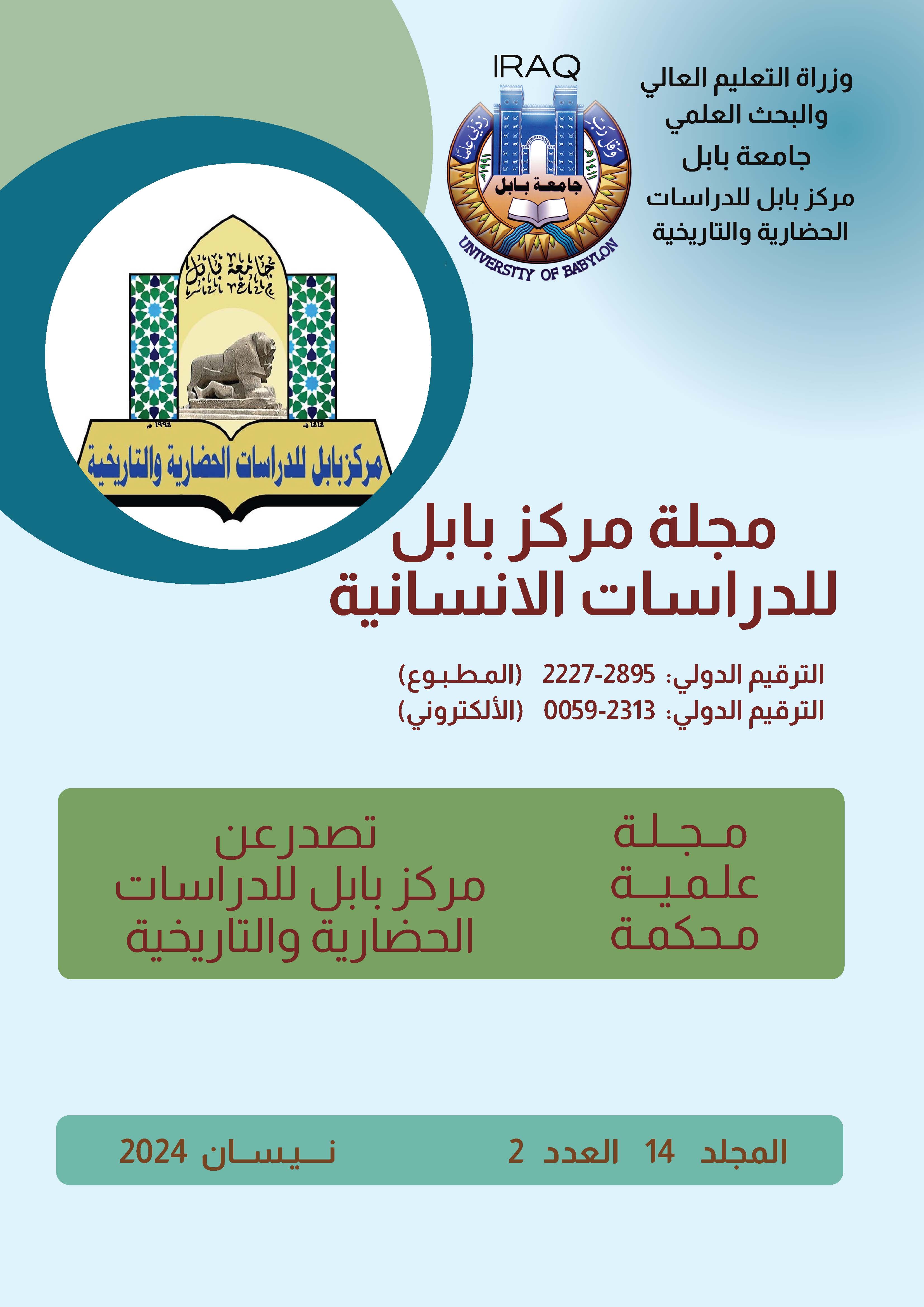Economic conditions in the New Fathers - New and Eastern Rome in the period of the Severian Dynasty (193-235 AD(
Keywords:
political and economic conditions, Rome, the eastern states, the western statesAbstract
Antiquity witnessed the emergence of major empires (such as Babylonian, Assyrian, Persian, Greek, Egyptian, and Roman). The Roman civilization is considered one of the greatest civilizations of the ancient world, which witnessed a great expansion beyond Italy to several regions of the world. It relied on cruelty and violence to subject the peoples of the conquered regions to its authority. Military bands are also considered a The striking and dominant force over the peoples. It was also considered a great cultural and political unit, as it reached a great degree of strength and breadth, as it included within its borders a number of centers of ancient civilization and controlled peoples and nations of different origins. Many laws and legislations were issued by those peoples who were different from each other in their historical heritage, languages, and religions. It extended along the shores of the Mediterranean Sea, which was considered a major artery connecting its various parts. Internal rivers also helped connect the outskirts of the states, in addition to the paved roads for which civilization was famous. The Romans, from whom they established a wide network, were credited with the activity of the commercial movement, as was the political factor, especially the policy of expansion, which led to the suppression of the nationalist spirit and an increase in racist movements, and thus hastened the collapse of the empire. The government tried to follow this policy of expansionist concentration in the late era of the Roman Empire. As a result of corruption that was rampant in the states This is because the governors of the states became insufficiently capable in the year 117 AD. This led to the government’s lack of confidence in the rulers of the states, especially after the weakness and dissolution of the local councils. Therefore, the central governments in the Roman Empire resorted to intervention to try to reform the administrative conditions in the empire, which led to the division of some The states were divided into other sub-states for the sake of reform and increasing taxes. Thus, the number of states in the Roman Empire increased from (46) states to (119) states until the year (327) AD. Those working in the administrative system of the cities subject to Roman political authority paid attention to providing public facilities and facilities from Playgrounds, theaters and bathrooms This was reflected in the request to increase practical taxes, which prompted some emperors to appoint auditors and accountants to examine the books of city municipalities. It also sometimes prompted them to deprive some municipalities of their freedom and autonomy, and make them subordinate to the state government. The research was divided into three axes. The first axis devoted to economic problems in The Roman Empire. The second axis is the political and economic conditions in the Islamic Levant. The third axis talks about the political and economic conditions in the Arab Maghreb







